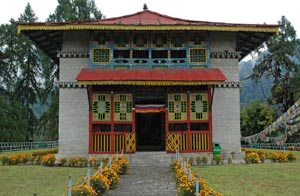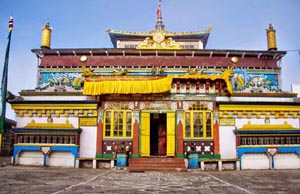Indian Monasteries
List of Buddhist Monasteries Stupas Padoga in India - Meaning History Facts
Buddhism is known to be one of the major world religions which flowered and spread from the ancient Kingdom of Magadha which at date is part of Bihar in India. The religion revolves around the teachings of Siddhartha Gautama who was acknowledged as Buddha or the enlightened one. As the religion took roots in the country itself there are a large number of monasteries all around the country. The monasteries in India however have a very strong effect of Tibetan form of Buddhism which has its roots in Tibet. Each monastery belongs to a different school of thought and has its own set of principles. These monasteries are known as "Gompas" and can be found in almost all parts of India. Brightly colored, innovative architecture, elaborate murals and paintings adorning the walls, red robed monks chanting prayers, an atmosphere of serenity and peace enveloping the area and a sense of peace that greets you in the monasteries of India is something that is really inspiring. Monasteries in India has evolved over the years in terms of architectural influence but has kept the originality intact. There are a lot of monasteries in India that go hundreds of years back which have a great history attached to them.
Sikkim Monasteries »
The Dubdi Monastery is having an architecture which resembles the Tibetan Style and has got many images of the saints, divinities, statues and murals in it. The Dubdi Monastery is situated on an altitude of about 7000 feet above the ground which indeed adds on to the architecture and beauty of the monastery. The monastery has two floors and faces towards the South direction. It has a square plan which makes it even more apt and strong. You can spot here extravagant collection of old manuscripts and texts.
West Bengal Monasteries »
The monastery is built in typical Buddhist religious architecture which was developed in South Asia in the 3rd century BCE. It is mostly in the Vihara style of structure which initially was used as temporary shelters used by wandering monks during the rainy season but gradually developed to accommodate the growing and increasingly formalised Buddhist monasticism. Originally it meant a secluded place in which to walk.

